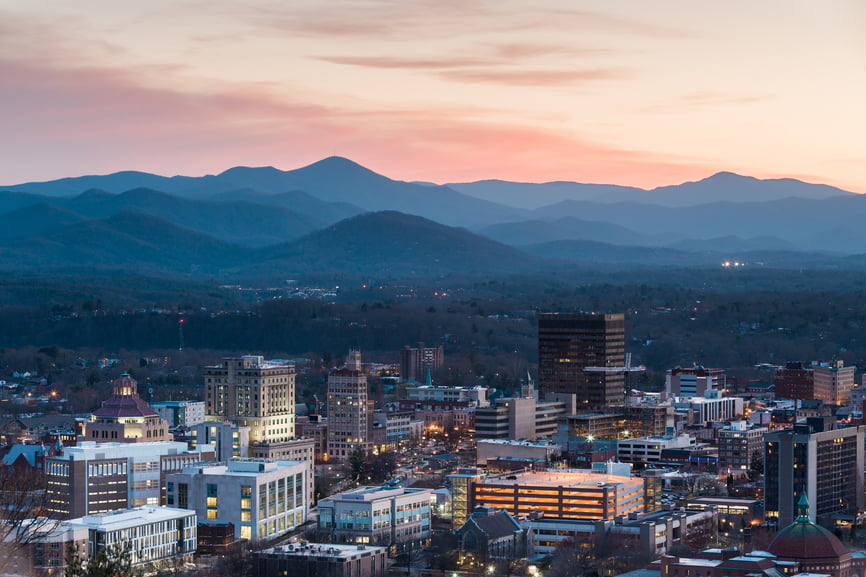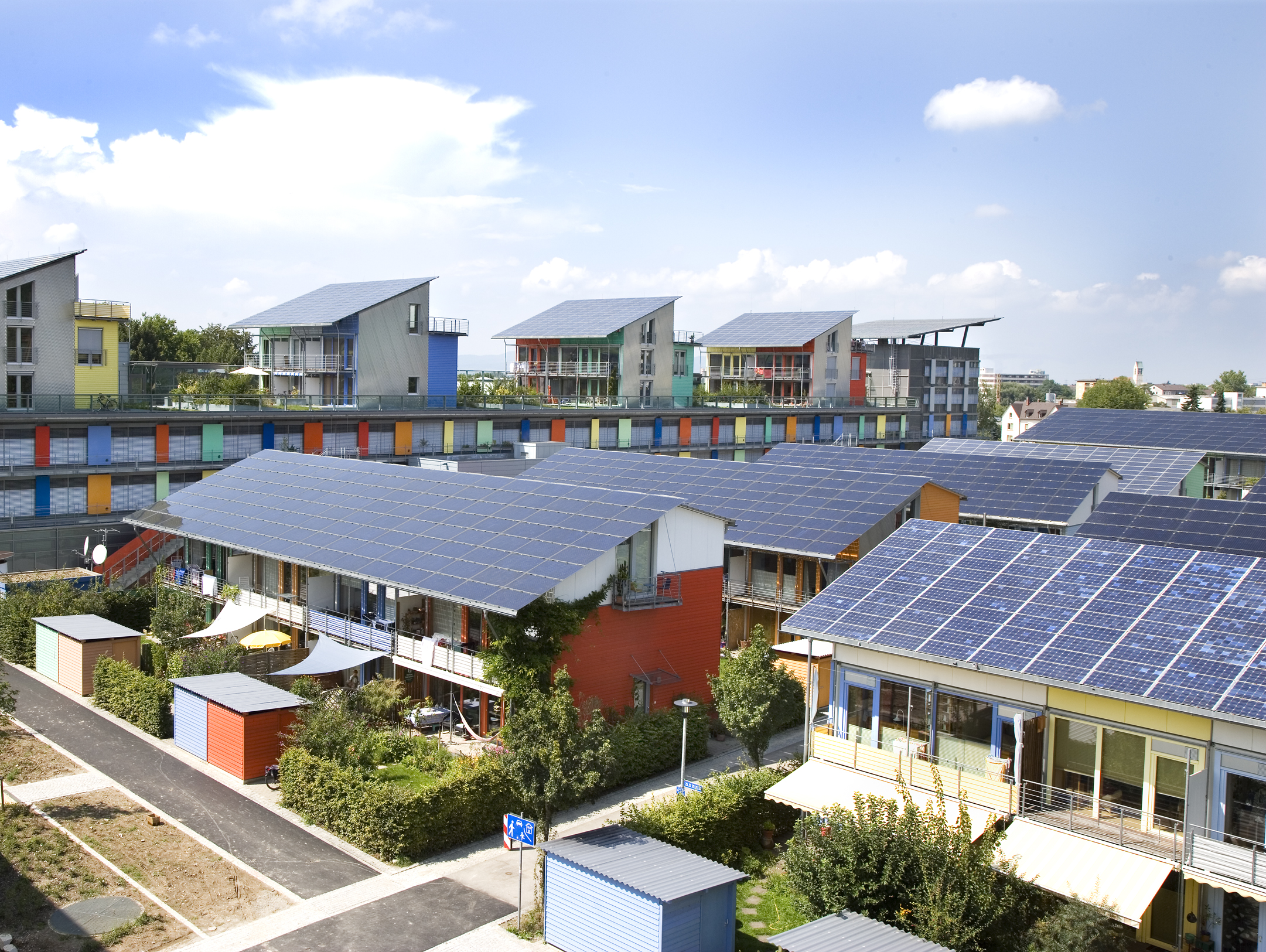Buildings represent 40% of the world’s energy use and generate 30% of the greenhouse gasses. Some might see that as a problem. However, optimists look at this differently. Because buildings – especially large ones – tend to be concentrated in urban areas, they represent a huge opportunity to reduce waste and improve efficiency. Increasingly, local governments are engaging the public, private, and nonprofit sectors, along with community groups, technical experts, utilities, stakeholders, and citizen volunteers in facilitating low-carbon choices in both new and existing buildings.
Cities: the Epicenter of Change
Cities have emerged as the epicenter of the global low-carbon movement. For example,
Boston, Massachusetts has already reduced carbon emissions by 25% and plans to cut 80% more by 2050, as does Cambridge, Massachusetts. New York City has also targeted an 80% reduction by 2050. Austin, Texas set an even higher goal of being carbon neutral by 2050. And, there are smaller cities too. Lancaster, California is well on its way to becoming a net zero city. Traverse City, Michigan, established a climate action plan in 2011 and last year committed to running all city operations on renewable power by 2020. Columbia, Missouri, established an energy benchmarking project supported by commercial energy audits for the downtown area. The cities of Bloomfield, Iowa, Montpelier, Vermont and Fort Collins, Colorado also have goals for reducing their energy use by 80% or more. No matter what their size, these communities realize that action must occur at the local level, making cities and counties the most effective zero energy leaders.
The World Resources Institute (WRI) and Johnson Controls published a report called Accelerating Building Efficiency, which details some of the actions these cities have taken and recommends further actions to improve efficiency.
Building Efficiency Codes and Standards
Buildings should last for decades, if not centuries, so new construction represents an opportunity to get it right the first time by building to the highest standard of energy efficiency. Anything less locks in waste and high operating costs. Low-efficiency buildings place a burden on future residents, citizens, and ratepayers. Improving the energy efficiency of buildings is a long-term commitment that building codes and standards are uniquely positioned to fulfill. Every newly constructed, conventional building could be a lost opportunity.
Typically, cost effectiveness is presented as an obstacle when updating building codes to higher energy efficiency standards. However, if the full life cycle of the building is considered, and not just the economics of the moment, codes requiring upgraded energy efficiency become the practical choice – even before the resulting reductions in carbon consumption are added to the equation.
To meet our climate goal commitments, state and local governments will need to develop building codes that achieve zero energy use for all residential and commercial buildings no later than 2030. California has already set 2020 as the zero energy target for residential codes and 2030 for commercial codes. Santa Monica has developed a reach code that increases building energy efficiency and requires solar electric panels in most new construction to take effect this year. Standards can be set for existing buildings as well. Codes serve to prevent locking in energy-wasting buildings for the long-term.
Efficiency Improvement Targets
It’s difficult to move forward if you don’t know where you’re going. That’s why targets or goals are essential for developing action plans and measuring success. The code targets mentioned above are one example. They can be targeted for different economic sectors or ownership types in order to prevent hardships to certain vulnerable groups. Other targets can be set for the entire community and broken down into smaller, more specific elements, including public, private, lighting, and HVAC or by economic sector (restaurant, retail, rental housing, etc). Goals for the public sector can be mandatory, while private sector targets are often voluntary and sometimes incentivized. Targets bind members of the community in a common goal and encourage cooperation.
Energy Ratings and Certifications
For individual buildings, a detailed analysis can identify energy used for space conditioning, water heating, lighting, and equipment. The results of this analysis are often packaged as an energy rating that allows comparison between buildings. Portland, Oregon, recently passed an ordinance requiring home energy ratings and disclosure to buyers whenever a property is sold. These universal ratings will allow the market to make informed decisions about the energy use and utility cost that accompanies a home under consideration. This will undoubtedly motivate some sellers to improve the energy features of the home before putting it on the market to make it more attractive. Alternatively, buyers can implement energy improvements, use their energy rating to support the additional cost of improvements to their mortgage, and enjoy a positive cash flow from day one of homeownership.
While energy ratings for individual buildings are useful for real estate transactions, this information can be collected, analyzed, and communicated on a larger scale. Known as energy benchmarking, it’s a way to identify the most fruitful opportunities across an entire area. St. Louis, Missouri, is among 20 cities participating in a national benchmarking initiative called the City Energy Project. Vermont maintains a Community Energy Dashboard that shows local information about each community’s energy use. The website encourages readers to meet specific benchmarks for efficiency improvements and renewable energy development. BuildingOS from Lucid is a commercial application used by the City of Orlando and other organizations to track large numbers of buildings and operate in-house conservation programs.
Building performance information can inform policy action. For example, New York City has developed evidence-based initiatives to reduce energy use in new and existing buildings. This detailed information guides effective actions on the ground.
Incentives and Financing
Many energy improvements are clearly cost-effective over time. However, it can sometimes be difficult to fund the initial work at the time of construction or renovation. Local governments, partnering with utilities, state governments, and nonprofits, often prime the pump by creating incentives or financing mechanisms targeted for energy-efficient buildings and local renewable generation.
Funding can include direct grants, performance-based incentives, loans and fee waivers. The City of Montpelier, Vermont has created a revolving loan fund to capture a portion of the savings from energy improvements to fund more improvements. Property Assessed Clean Energy (PACE) programs can be used for both new and existing buildings in the residential and commercial sectors. Cities often use tax-increment financing for public infrastructure projects, and some include renewable energy infrastructure.
Many agencies promote energy efficient buildings with tangible benefits, but without a direct budget impact to the agency. These might include priority processing of permits and other applications. Another common benefit is regulatory flexibility, which may include allowing density bonuses (more housing units per acre) for efficient buildings or requiring fewer parking spaces for locations served by bicycle corridors or mass transit.

Leadership by Example
When local governments themselves adopt energy-efficient practices and purchase efficient products it has a direct impact on local residents. People take notice of LED lights in government buildings and electric cars bearing agency logos. This gives valuable public exposure to common-sense, energy-saving activities. There are a growing number of cities that are very visibly on the path to zero energy. The Sierra Club’s Ready for 100% program supports cities that set a goal to get 100% of their energy from renewables.
Conventional local government budgeting simply accepts energy payments as an annually escalating cost. Turning this thinking on its head can serve as a powerful example to the larger community it serves. Actually, energy costs can be substantially reduced allowing more funds for other government services. Budgeting and procurement guidelines that give high priority to efficiency should apply to government-owned properties as well as those leased from the private sector. Individual government units can outsource energy procurement and efficiency upgrades from energy service companies when it is more cost effective than self-managed projects. All new government buildings, including schools, should be built to zero energy standards. As long-term owner/occupants of new energy-efficient facilities, local institutions benefit from the positive economics of lower operation costs over time.
When governments become early adopters, they use their buying power to support the materials, products, and contractors needed to improve energy efficiency. In this way, they grow the market for an important new sector of the economy. Much of this expenditure can be made locally, supporting local jobs and businesses – vitalizing local economies.
Affordable Housing
Local governments are often engaged in various efforts to encourage affordable housing. During the planning and design phase, they should insist on the most cost-effective package of energy features for subsidized housing. Even though the initial costs will be higher, the cost of ownership or the cost of leasing will be lower, making these projects more affordable for the residents.
Eco-districts
Cities can leverage greater energy efficiency by facilitating zero energy districts. Rocky Mountain Institute’s (RMI) Integrative Business Model for Zero Energy Districts addresses districting specific to zero energy buildings. For example, all buildings may not have sufficient surface area for solar panels. However, several building owners could share a nearby solar array. RMI suggests developments could use super-efficient district heating and cooling, common in Scandinavia, along with optimized solar generation to meet a carefully calculated energy budget for the entire development district. Funding for eco-districts could be leveraged with a tax-increment financing arrangement as is done in many cities.
Urban Planning
High-density cities encourage people to travel by foot, bicycle, and transit. Creating work-live communities, where people work in the neighborhood where they live, eliminates the energy waste involved in commuting. In many cities, there is a demonstrable “transit effect” occurring where light rail draws well-designed, multi-family housing like a magnet. Portland, Oregon sees so much value in this approach that they have special funding to facilitate more of it.
Keys to Success
Cities with successful programs have strong leadership from elected officials and city staff, as well as effective community involvement and advocacy. They have policy, technical, and financial support from their states and local professionals. And, they engage the private sector and nonprofits in leveraging public funds while building their local economy. The WRI report, Accelerating Building Efficiency, identifies a number of processes and tools that can be used by local governments to successfully implement the ideas presented here.
We can all Play a Part
As cities, large and small, take the lead in moving towards zero energy, builders, designers, developers, manufacturers, and city planners will need to develop the skills and tools needed to meet the resulting demand for energy-efficient buildings. And they can volunteer to support efforts to do so in their cities. All citizens can become effective advocates for moving their communities on the path to zero.


Guy Eames says:
Very useful material but very US focused. Would be useful to include many more examples of initiatives in the EU, China, etc